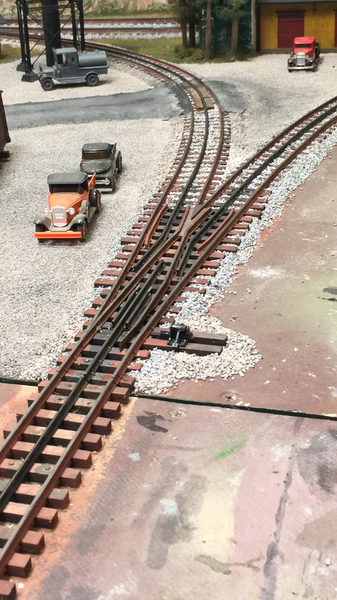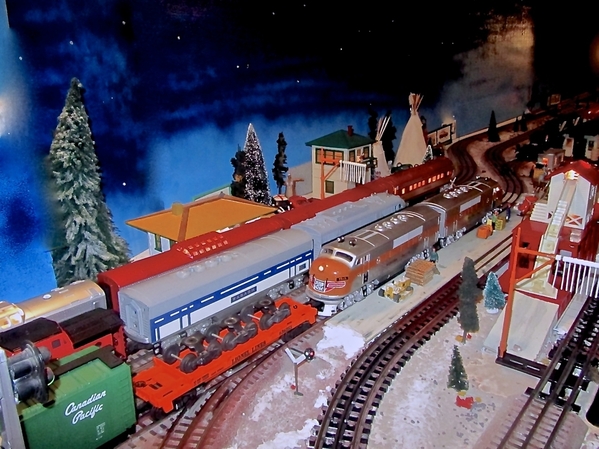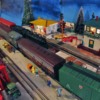This has been a topic I’ve been wanting to post for a while, sort of an observation really. My current layout has all automatic, standard Lionel switches of the O27 variety (though in various radii, mainly O-36). They... aren’t the most reliable gadgets, even by the standards of Lionel gadgetry. Two of them work perfectly, two of them work ok, and one hardly ever works properly. Naturally, the last one is on the far side of the table. Isn’t it always like that?
Now, I quite like switching, as a operation. It’s fun to pick up and set out cars, park trains in sidings, service local industry, ect.. I really think it makes for some great fun and cool looking scenes.
But fighting with switch machines is a bear, it really sucks the fun out of a quick operation session, especially if your train stalls on the other side of the table (that seems to happen every time I try and service my industrial spur!). Or if the switch machine decides to second guess you and flip to prevent/cause a derailment, or just refuses to work at all. I also find myself often flipping switches (that I can reach, anyhow) by hand anyways, it adds something delightfully tactile to do as a single operator, it’s sort of like playing the brakeman as well as the engineer.
So here’s a question, or maybe more a statement: I think, in terms of layout design, that switches should be largely manual to improve operational reliability. Or at very least, your automatic switches should be within arms reach, in case they prove recalcitrant! Has anybody else come to this conclusion as well?
This train of thought has also led me to wonder: do manual switches still suffer from shorter length locomotives stalling on them? I presume they would, since I think that’s usually a function of how far apart pickup rollers are apart vs how long the switch frog is, isn’t it? Since presumably the track geometry dose not change I’d assume that there’d be no difference between a manual and automatic switch in this regard.
It also occurs to me that, depending on one’s chosen era, modeling all manual switches might also be more prototypical too.











